Geoscience Reference
In-Depth Information
Taking the finite differences to the infinitesimal limit, the stress (force per area)
can be written as
∂
∂
u
x
τ
=
µ
1
31
3
Here the subscript 31 means the force exerted by the moving fluid layer in the
x
1
direction due to the velocity gradient in direction
x
3
. Therefore, the stress tensor has
nine components, three terms for every spatial direction.
The effect of this stress tensor on the equation of motion can easily be derived.
The derivation is almost equivalent to the incorporation of the pressure gradient force
into the Euler equations, and the result for the viscous force
F
31
per unit mass in the
x
1
direction due to the shear in the
x
3
direction is
=
2
∂
∂
τ
∂
∂
u
x
∂
∂
u
x
1
1
∂
∂
r
31
F
=
31
=
µ
1
ν
1
2
ρ
x
ρ
x
3
3
3
3
where we have used the
kinematic viscosity coefficient
v
=
µ
/
ρ
to write the equation
more compactly.
In the same way, the viscous forces in the
x
1
direction due to shear in the other
directions can be derived, yielding
2
2
2
=
2
∂
∂
u
x
+
∂
∂
u
x
+
∂
∂
u
x
∂
∂
u
x
r
F
=
ν
1
1
1
ν
1
2
1
2
2
2
1
2
3
j
and the viscous forces in the other directions read
2
2
∂
∂
u
x
∂
∂
u
x
r
r
F
=
ν
2
2
F
=
ν
3
2
2
3
j
j
Including the friction term into the Euler equations we end up with the so-called
Navier-Stokes equations:
2
du
dt
∂
∂
u
x
j
−=−
∂
∂
1
p
x
1
fu
+
ν
1
2
(3.15a)
2
ρ
1
2
du
dt
∂
∂
u
x
j
+=−
∂
∂
1
p
x
2
fu
+
ν
2
2
(3.15b)
1
ρ
2
2
du
dt
−+
∂
∂
u
x
j
1
∂
∂
p
x
3
=−
g
ν
3
2
(3.15c)
ρ
3




















Search WWH ::

Custom Search